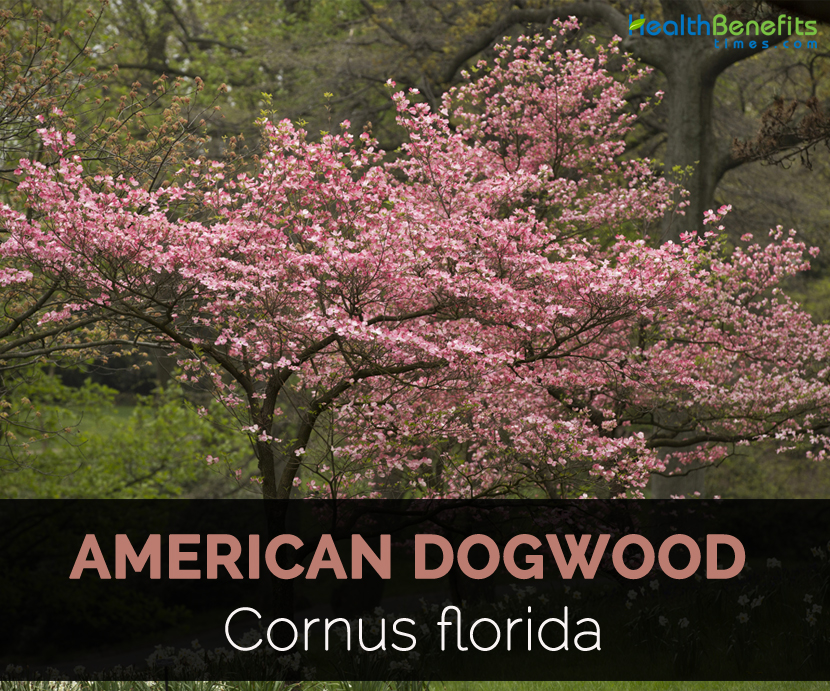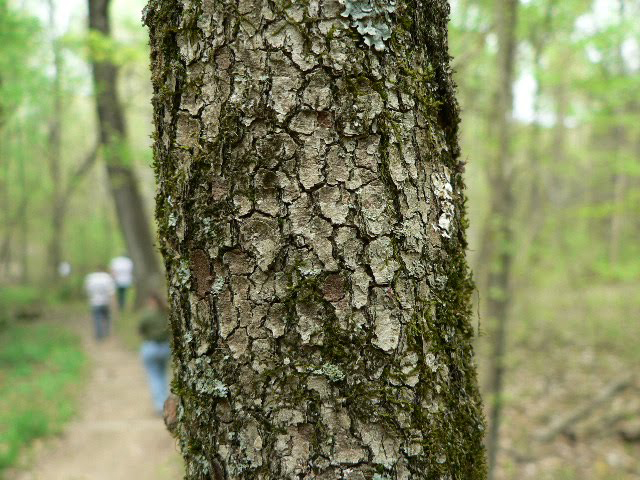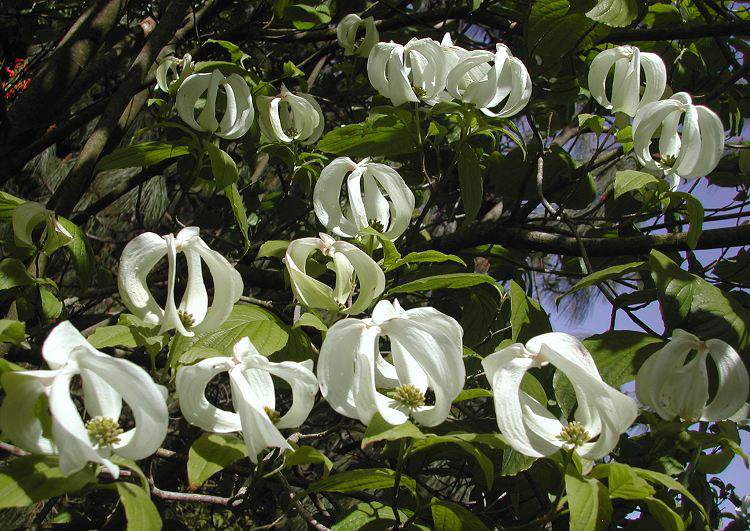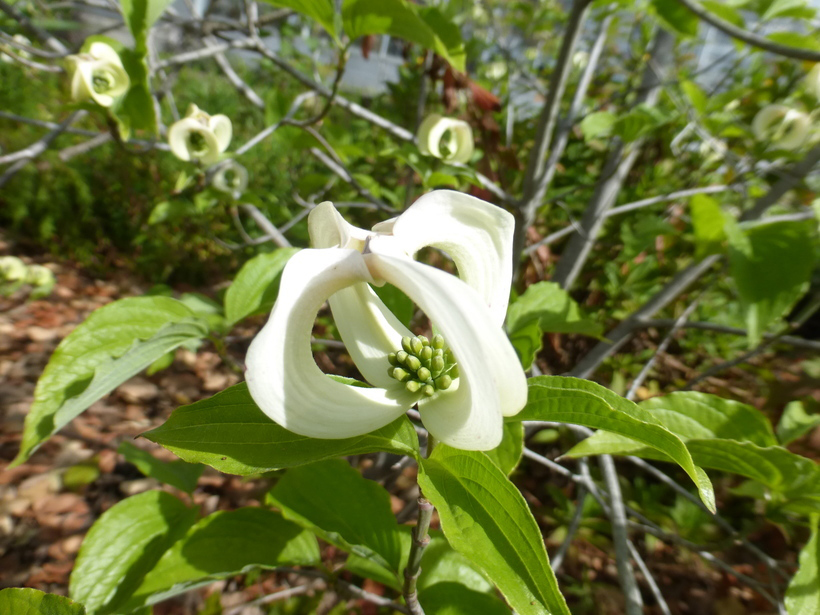| American Dogwood Quick Facts | |
|---|---|
| Name: | American Dogwood |
| Scientific Name: | Cornus florida |
| Origin | Eastern United States from the Gulf of Mexico and central Florida to east Texas, Oklahoma and Arkansas to Chicago and southern New England |
| Shapes | Elongated, 10–15 mm (0.39–0.59 in) long, 8 mm (0.31 in) wide |
| Name | American Dogwood |
|---|---|
| Scientific Name | Cornus florida |
| Native | Eastern United States from the Gulf of Mexico and central Florida to east Texas, Oklahoma and Arkansas to Chicago and southern New England |
| Common/English Name | Flowering Cornel, Borwood, Green Ozier, Flowering Dogwood, Virginia Dogwood, White Cornel, Florida Dogwood, Arrowwood, American Boxwood, St. Peter’s Crown, False Box, Corona De San Pedro, Boxwood, Cornelian Tree, Green Ozier, Virginia Dogwood |
| Name in Other Languages | English: American-boxwood, Dogwood, Eastern flowering dogwood, Flowering dogwood, White dogwood; German: Blumen-Hartriegel; Swedish: Blomsterkornell; French: Cornouiller à fleurs, Cornouiller fleuri, Cornouiller de Floride |
| Plant Growth Habit | Small deciduous tree |
| Soil | Well-drained, cool, moist, acidic |
| Plant Size | 15-30 feet high |
| Bark | Dark gray, brown or black |
| Leaf | Ovate, 6–13 cm (2.4–5.1 in) long and 4–6 cm (1.6–2.4 in) broad |
| Medicinal part | The dried bark |
| Flowering Season | May-June |
| Flower | White, cream, gray, 3-6 inches across |
| Fruit shape & size | Elongated, 10–15 mm (0.39–0.59 in) long, 8 mm (0.31 in) wide |
| Fruit Season | Late summer and the early fall |
Bark
Bark is smooth and light gray when tree is young. As it grows, bark turns to grayish brown and develops distinctive blocky patter which looks like alligator skin.
Twigs
Twigs are slender, greenish to light brown, purplish and upturned at the tip. Leaf buds are slender, pointed and flower buds are stalked and globular.
Leaves
Leaves are simple, opposite, oval, upto 5 or 6 inches long and less than half as wide. It has smooth, slightly wavy margins and is pointed at the tip. Typically they are shiny green and smooth on upper surface and paler on lower surface. Leaf veins are deeply impressed and conspicuous. Leaf stalks are less than 1 inch long and can be either smooth or hairy.
Flowers
Flowers occur in small, greenish-yellow and inconspicuous clusters at center and above four large and showy white to pinkish bracts. The flower blooms in late April or May.
Fruits
Fruits are oval, red berries which grow in clusters and appear in autumn.
Health Benefits of American Dogwood
1. Analgesic
Bark preparations is shown to possess strong analgesic properties and are recommended to provide relief from back pain, headaches, painful muscle cramps and strain or inflammatory conditions.
2. Anti-inflammatory
Bark preparations have anti-inflammatory properties and are used for treating muscle inflammations and sore throat problems.
3. Natural antipyretic
American dogwood bark has antipyretic action which helps to lower fever naturally. Fresh and dried flowers are prepared into herbal infusions and used for lowering fever in both children and adults.
4. Antidiarrheal & antimalarial activity
The astringent properties cause tissues to constrict limiting fluid loss. Bark is effective against diarrhea. The traditional medical practices use herbal infusions of American dogwood bark, leaves and flowers for treating malaria.
5. Soothing on the throat
It has soothing and anti-inflammatory properties and reduces hoarseness and treat sore throat discomfort.
Uses
It is much used as substitute for Peruvian bark (Cinchona), from which quinine is made, and may be used when the foreign remedy is not to be had, or when it fails, or when it cannot be administered. By some, Dogwood is prized for ague, but it is better adapted to the diseases caused by weakness of the stomach and bowels, by inducing circulation of healthy blood to the parts, removing effete matter, vitalizing the tissues and speedily removing pain from the diseased parts. To overcome water brash and other stomach weaknesses, capsules combined with Golden seal (Hydrastis canadensis) and Ginger (Zingiber) in powder form can be taken after meals. “Dogwood, or Green ozier, exerts its best virtues in the shape of an ointment”—Dr. O. P. Brown (1875). Both are effective. Internally, 1 teaspoonful of the bark in 1 cup of boiling water, steeped for ½ hr. Drink ½ cupful upon retiring at night, hot or warm, or take a mouthful three times a day. 1 or 2 cupfuls may be taken. Of the tincture, ½–1 fl. dram.
Homoeopathic Clinical: Tincture of fresh bark—Dyspepsia, Intermittent fever, Pneumonia.
Culinary uses
It can be mixed with other fruits and made into jams and jellies.
Medicinal uses
- It is used for antiperiodic and astringent properties.
- It is used for treating malaria.
- Use it in form of poultice on wounds and ulcers.
- Boil the inner bark and drink tea to lower fevers and restore lost voice.
- Bark and root infusion is used for treating childhood diseases such as worms and measles.
- Tea or tincture of root bark is used for treating malaria.
- It is also used in form of bath.
- Boil dogwood bark in water and use the extract to ease sore and painful muscles.
Other facts
The maximum lifespan of American Dogwood is about 80 years.
References:
https://pfaf.org/user/Plant.aspx?LatinName=Cornus+florida
https://extension.tennessee.edu/publications/Documents/PB1670.pdf
https://practicalplants.org/wiki/Cornus_florida
https://www.natureword.com/properties-and-benefits-of-american-dogwood/





